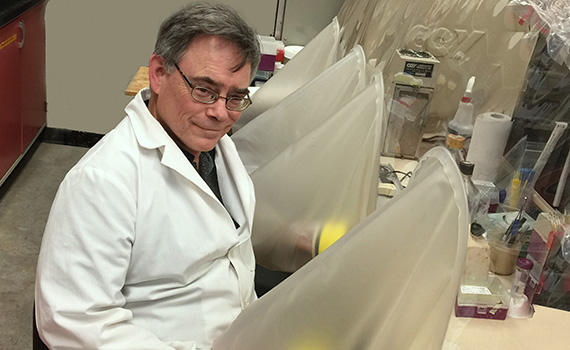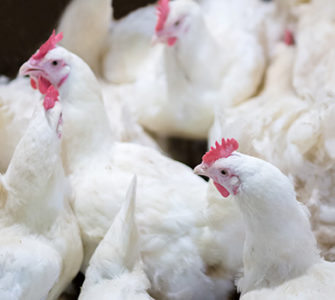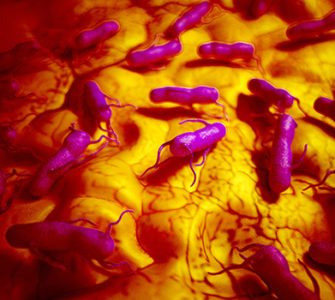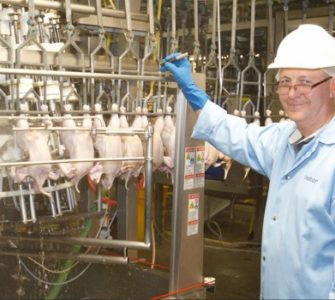Options for Salmonella control in live poultry production
By Steven C. Ricke, PhD
Professor, University of Arkansas
Director, Center for Food Safety, Institute of Food Science and Engineering
University of Arkansas
Salmonellosis remains one of the most common foodborne diseases in the US. It’s also the most costly foodborne disease in the US, causing an estimated $3.7 billion in medical expenses annually.1
Today, more than 2,500 Salmonella serovars have been identified.2 Although the serovars that cause human disease, such as Typhimurium and Enteritidis, are commonly found on all kinds of food products, poultry is still considered a major source of foodborne Salmonella.
Because Salmonella occurs naturally in poultry, all links of the food chain — live production, transportation, processing, packaging and food preparation — must follow best practices to guard against contamination. The new standards for Salmonella in chicken parts, established in 2016 by the USDA’s Foods Safety and Inspection Service, provide added incentive for live production to work closely with processing to reduce the incidence of Salmonella in birds heading to processing.
Probiotics and prebiotics
One on-farm method of preventing Salmonella is the use of commercial probiotic or “competitive exclusion” bacterial cultures that can establish themselves in the chicken gut and serve as a “barrier” to Salmonella colonization. These live-culture products have evolved over the years from fairly complex groups of organisms to much simpler single bacterial species. More recently, the use of spore-forming bacteria such as Bacillus have become popular.
Prebiotics can’t be digested by the bird but can be selectively used by gut bacteria that are considered beneficial to the host. These compounds have traditionally been complex carbohydrates such as fructooligosaccharides or chemically related compounds that can be used by gut bacteria such as lactic acid bacteria and bifidobacterium.3 However, as more is understood about the gut microbial ecosystem, the definition of what constitutes a prebiotic compound has become much broader and can include yeast-based compounds and indigestible fiber, among others.
Combinations of prebiotics and probiotics referred to as “synbiotics” have also been explored, with the idea being that the probiotic is fed along with specific prebiotic substrates, which can be specifically used by the probiotic, thus helping to ensure successful gut establishment.
The results with these various methods — competitive exclusion, prebiotics and probiotics — are mixed and the reasons why are not yet known.
Vaccines for Salmonella
Modified-live Salmonella vaccines, inactivated Salmonella vaccines or both can be used to trigger the bird’s immune response to help resist Salmonella colonization. Vaccination can be used as a preventive measure within flocks but can also be used to reduce the dissemination of Salmonella among flocks.
Broiler flocks can be vaccinated against Salmonella, but most commonly, breeders are vaccinated. Studies have demonstrated that broilers from Salmonella-vaccinated hens have a lower prevalence of the pathogen when placed at contract farms and when entering the processing plant.4
Agents with antimicrobial action
Possible agents with antimicrobial action proposed for use in poultry diets or water include short-chain fatty acids — acetate, propionate and butyrate — along with medium-chain fatty acids and botanical compounds such as essential oils.5,6 Most of these compounds are fairly broad spectrum and can be antagonistic to non-Salmonella as well as Salmonella.
Bacteriophage — viruses that are isolated from Salmonella or the environment and directly attack, invade and kill bacteria — have also been proposed as a way to manage Salmonella, but there’s a drawback: They act very specifically on their bacterial host. This is certainly true for Salmonella, where bacteriophage can be highly specific for a particular Salmonella serovar or even certain Salmonella strains within the serovar group. However, this specificity can be problematic when bacteriophage are considered for sustained application because resistance can develop fairly rapidly.
Obstacles to control
Effective and consistent reduction of Salmonella in poultry production currently remains elusive. Salmonella species are capable of surviving harsh environments and new, different strains emerge. During its life cycle, Salmonella can encounter various environmental stress conditions that may have a dramatic effect on its survival and virulence. For example, Salmonella can generate protective mechanisms that enable it to tolerate exposure to acids, heat and other threats.
In addition, with the use of specifically targeted antimicrobials and bacteriophage, more-resistant Salmonella strains can emerge by either picking up resistant genes from neighboring organisms or by altering their metabolism to decrease susceptibility. Finally, in addition to the well-established disease-causing Salmonella serovars such as Typhimurium and Enteritidis, other serovars such as Heidelberg have now come to the forefront as a cause of foodborne illness in people.
Future possibilities
Despite these obstacles, improved methods of Salmonella management are on the horizon. Recent advances in sequencing technology in particular are enabling a better understanding of Salmonella.
Whole-genome sequencing — determining an organism’s complete DNA sequence — gives researchers the ability to more clearly identify Salmonella serovars and strains. This technology can be used to more precisely track outbreaks, provide data for designing better molecular-based detection assays and may lead to more effective Salmonella vaccines.
RNA sequencing will enable us to better understand how Salmonella responds to external threats such as the antimicrobials we use in live production as well as processing. This in turn may help us figure out how to stop this pathogen from circumventing these threats, ultimately leading to better Salmonella control and improved food safety.
Editor’s note: The opinions and advice presented in this article belong to the author and, as such, are presented here as points of view, not specific recommendations by Poultry Health Today.
1. USDA: Salmonella Tops List of 15 Most Costly Pathogens. Food Safety News. January 7, 2015.
2. Iwamoto M. Chapter 3. Infectious Diseases Related to Travel. Salmonellosis (Nontyphoidal). Centers for Disease Control and Prevention. CDC 24/7: Saving Lives, Protecting People™
3. Ricke, S.C. 2015. Potential of fructooligosaccharide prebiotics in alternative and nonconventional poultry production systems. Poultry Sci. 94:1411–1418.
4. Dorea F, et al. Effect of Salmonella Vaccination of Breeder Chickens on Contamination of Broiler Chicken Carcasses in Integrated Poultry Operations. Appl Environ Microbiol. 2010 Dec.;76(23):7820-7825.
5. Ricke SC. Perspectives on the use of organic acids and short chain fatty acids as antimicrobials. Poult Sci. 2003;82:632-639.
6. Rivera Calo, J., P.G. Crandall, C.A. O’Bryan, and S.C. Ricke. 2015. Essential oils as antimicrobials in food systems – A review. Food Control. 54: 111-119.
Posted on June 15, 2017

















